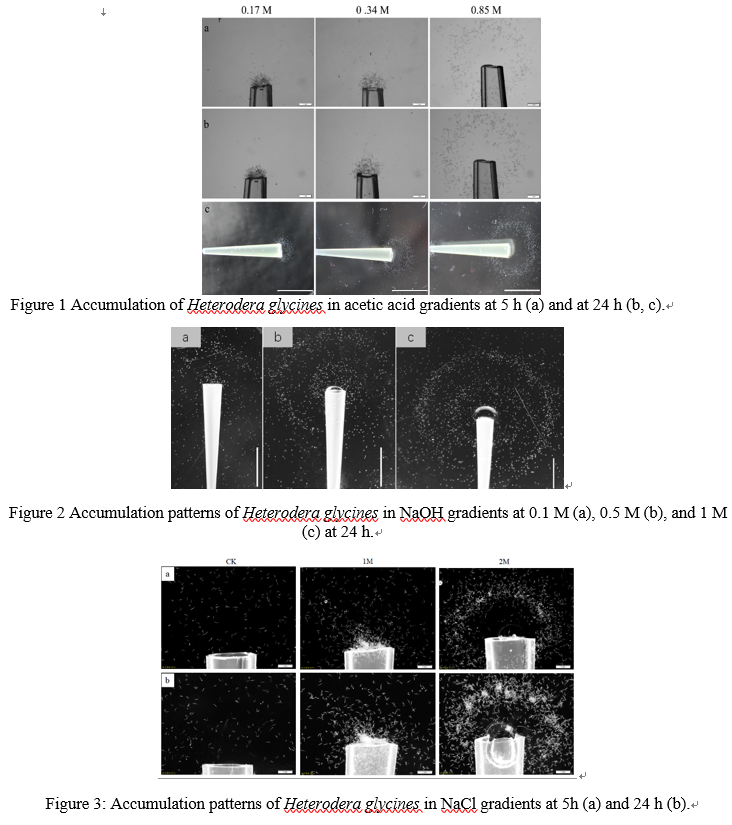Root-knot nematodes (RKN, Meloidogyne spp.) and cyst nematodes (CN, Heterodera and Globodera spp.) are top two economically important and soil-borne plant parasitic nematodes in the world. During the early stage of plant-nematode interaction, semiochemicals and/or other signals from the complex rhizosphere environment including plants, microorganisms and soil environment are very important cues to influence nematode behaviors and consequently to affect nematode location and infection. It is well known that roots and rhizosphere microorganisms rely on root exudates to produce CO2 through respiration which contributes to soil acidification. However, it is not clear whether or not RKN or CN attraction prefers same range of acidic pH or basic pH or ions in the soil.
The research group of Professor Congli Wang utilized the powerful Pluronic gel in which nematodes move in a three-dimensions as in the soil compared with two-dimensions of the agar gel, to demonstrate how the acidic (Figure 1) and basic (Figure 2) pH and inorganic salts (Figure 3) affect nematode behavior, accumulation, and survival. First time, the group detected the preferred basic pH range and ion concentration for nematode attraction using microelectrodes. For SCN, maximum nematode accumulation was between pH range 4.98-5.46 in an acid gradient, while the preferred alkaline pH ranges were 8.40-8.78 and 9.52-9.99. The preferred Cl- concentration for SCN attraction was 171-256 mM. RKN showed weak attraction to base and salt at low J2 concentration but increasing attraction at a greater nematode concentration. These observations provide new insights into the complexity of behavior of PPN in the opaque soil environment such as the importance of density-dependent social interactions in their response. A long range goal is to apply the knowledge we gained here to manage PPN through disrupting nematode host-seeking by modifying soil pH and/or salt dosages. For example, the finding that SCN goes to toxic levels of salts suggests bait and kill strategies could be developed.
The research was supported by National Natural Science Foundation of China (31772139, 31471749) and Key Projects of Natural Science Foundation of Heilongjiang Province of China (ZD2017006). The graduate student Cui Hua and Associate Professor Chunjie Li are co-first authors and Professor Congli Wang is the corresponding author of this research.
Paper link: Hua, C., Li, C., Jiang, Y. et al. Response of soybean cyst nematode (Heterodera glycines) and root-knot nematodes (Meloidogyne spp.) to gradients of pH and inorganic salts. Plant and Soil (2020). https://doi.org/10.1007/s11104-020-04677-z

